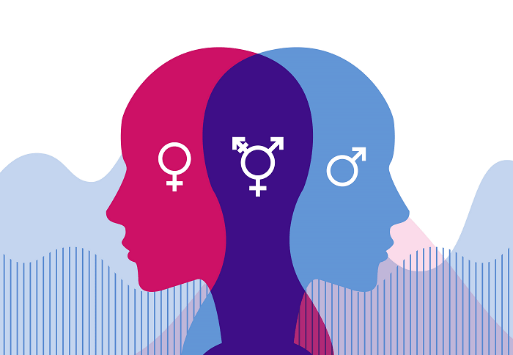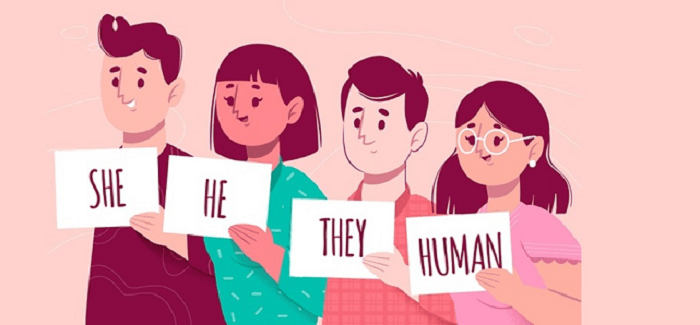Gender DefinitionThe social, psychological, cultural, and behavioral aspects of gender identity-male, female, or another-are all included in gender. This could involve gender expression and sex-based social structures (i.e., gender roles) depending on the situation. In most societies, gender is divided into two categories (male or female), and people are assumed to fall into one of these categories or the other. People who do not fit into either of these categories may be referred to as non-binary. There are more genders besides "man" and "woman" in some communities referred to as third genders, such as the hijras of South Asia. Gender is a crucial element of social organization, according to the majority of academics. In the academic fields of psychology, sexology, and feminism, a terminological distinction between biological sex and gender emerged in modern English in the middle of the 20th century. Gender was rarely used before the middle of the 20th century to describe anything other than grammatical categories. In the 1970s, feminist thought acknowledged the idea of the separation between biological sex and the societal idea of gender. Modern social scientists, behavioral scientists, biologists, various political bodies, legal systems, and international organizations like the WHO differentiate between gender and sex. Gender studies is an area of study within the social sciences. The topic is also relevant to other fields, including psychology, sociology, sexology, and neuroscience. The social sciences, and gender studies in particular, sometimes approach gender as a social construct, whereas research in the natural sciences examines whether biological differences between males and females affect the development of gender in humans. Both inform the discussion about how biological differences affect the formation of gender identity and gendered behavior. Gender is studied from a biopsychosocial perspective, which includes biological, psychological, and social/cultural factors. 
Gender and Sex'Sex' and 'gender' are frequently used interchangeably, even though having different meanings. "Sex" refers to biological characteristics in both people and animals. It is mainly associated with physical and physiological traits like chromosomes, gene expression, hormone levels, and functions, as well as reproductive and sexual anatomy. There are variances in the biological traits that make up sex and how those qualities are presented, even though sex is commonly categorized as female or male. The roles, behaviors, expressions, and identities of girls, women, boys, men, and gender-diverse people are called gender. It impacts how people act and interact, how they perceive others and themselves, and how power and resources are distributed in society. Gender identity exists on a continuum and can evolve; it is not limited to a binary (girl/woman, boy/man). Gender is understood, experienced, and expressed by people and groups in various ways depending on their roles, the pressures placed on them, how they interact with others, and the complex manner in which gender is institutionalized in society. Gender RolesJohn Money, a sexologist, first used the phrase "gender role" in 1955. The actions or reactions that may indicate an individual's status as a boy, man, girl, or woman, respectively, are referred to as gender roles. Clothing, speech patterns, movement, jobs, and other aspects outside of biological sex are all aspects of gender roles. Contrary to taxonomy ideas, some feminist philosophers claim that gender is a "vast orchestration of subtle mediation between oneself and others" instead of a "private cause behind manifest behaviors." Types of GendersFour different types of genders apply to living and nonliving objects.
Examples are man, boy, fox, king, father, cock, bull, etc.
Examples may include woman, girl, vixen, mother, queen, hen, cow, etc.
For example, chair, hair, state, city, etc.
For example, teachers, friends, cousins, relatives, parents, etc. 
Other Categories of GenderMany people disagree with being labeled as male or female, either because they don't see themselves in those categories or because they're transitioning to the other gender. Men and women have different responsibilities, rights, and roles, and these roles and interactions are referred to as gender. It doesn't just refer to men or women; it also discusses how socialization shapes people's personalities, behaviors, and identities. Unequal access to resources, options, and power is frequently linked to gender. Women's and men's situations are impacted by historical, religious, economic, and cultural circumstances. These duties and responsibilities are entitled to shift over time. There are roughly a dozen broad gender categories, including:
Gender and healthThe socially constructed characteristics of girls, boys, women, and all other genders are called gender. This involves social interactions and the expectations, behaviors, and responsibilities of being a female male, girl, or boy. Gender is a social construct that varies from culture to culture and can change. Gender is structured and creates inequalities that correlate with other economic and social inequalities. Ethnicity, socioeconomic class, handicap, age, place of residence, gender identity, and sexual orientation are just a few examples of how gender-based discrimination intersects with other types of prejudice. This can be pointed to as intersectionality. Sex is related to but distinct from gender; it describes the many biological and physiological characteristics that distinguish males, females, and intersex people, such as chromosomes, hormones, and reproductive organs. Gender identity is related to, but distinct from, sex and gender. The phrase "gender identity" refers to a person's deeply felt, oneself internal experience of gender, which may or may not match up with their physiology or the sex they got at birth. Gender impacts people's experience of and availability of healthcare. The availability of medical information, services, and support and the results of those encounters may be influenced by how health services are structured and provided. Health care should be accessible, affordable, and accepted by everyone. It should also be provided with quality, equity, and dignity. Women and girls are more likely to have poor health and well-being due to discrimination and gender inequality. Women and girls regularly encounter more significant obstacles than men and boys in utilizing health services and information. Some of these barriers are mobility restrictions, a lack of access to decision-making power, lower literacy rates, discriminatory attitudes held by communities and healthcare professionals, and a lack of knowledge about the unique health needs and challenges women and girls face among healthcare professionals and health systems. So, among other things, women and girls are more susceptible to hunger, impaired vision, respiratory illnesses, malnutrition, and elder abuse. They are also more likely to contract sexually transmitted diseases like HIV and develop cervical cancer. In addition, due to gender inequality, women and girls encounter unacceptably high rates of violence and run the danger of adhering to harmful traditions like child marriage and female genital mutilation. One in three women worldwide has experienced non-partner sexual violence or abuse in intimate relationships, according to WHO figures. The health and happiness of boys and men can also be significantly impacted by harmful gender norms, particularly those associated with rigid ideals of masculinity. For example, some conceptions of masculinity may encourage boys and men to smoke, engage in unsafe sexual activity and other health risks, abuse alcohol, and avoid medical care. Boys and men are particularly encouraged by these gender norms to use violence against others and to get involved in it themselves. They might also negatively affect their mental health. Rigid gender norms harm those who identify as a different gender since they commonly face assault, stigma, and discrimination, even in medical settings. They thus have an increased risk of contracting HIV and developing mental health issues, such as suicide. ConclusionThe idea that a person is either a male or a woman based on their physical attributes has been reinforced by numerous communities for ages. Sex and gender are incorrectly mixed in this notion. Gender and sex are different ideas. In general, gender includes a person's identities, expressions, and social duties, while sex refers to a person's physical traits at birth. A person may identify with no gender at all or with a gender other than their biological sex. Although non-binary is a phrase that refers to a wide range of identities, it is frequently used to describe the latter identity.
Next TopicGlobalization Definition
|
 For Videos Join Our Youtube Channel: Join Now
For Videos Join Our Youtube Channel: Join Now
Feedback
- Send your Feedback to [email protected]
Help Others, Please Share










